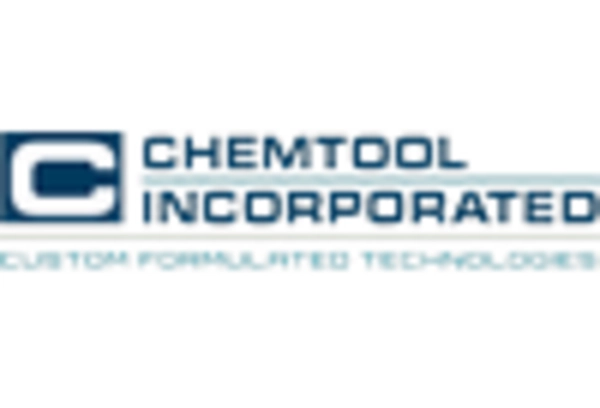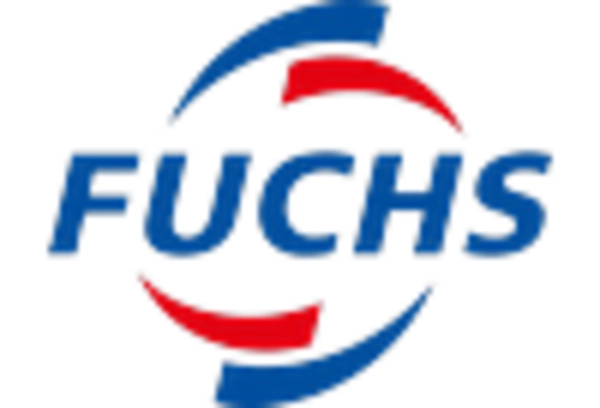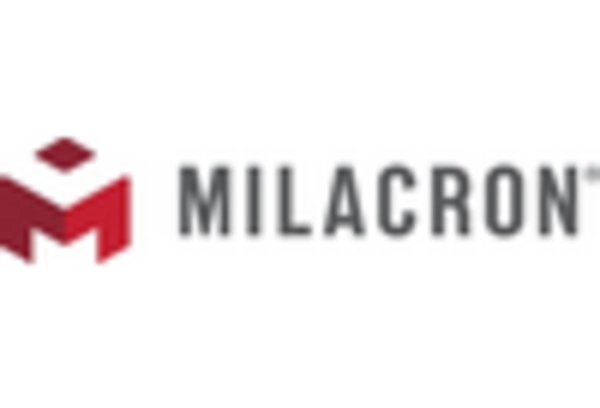Expansion of the Automotive Sector
The expansion of the automotive sector is a critical driver for the Quenching Fluids Salt Market. As automotive manufacturers strive to produce lighter, stronger, and more fuel-efficient vehicles, the demand for high-performance materials has surged. This has led to an increased reliance on heat treatment processes, which utilize quenching fluids to achieve desired material properties. The automotive industry is projected to grow at a rate of 4% annually, further stimulating the demand for quenching fluids. Consequently, the Quenching Fluids Salt Market is likely to experience significant growth as manufacturers adapt to the evolving needs of the automotive sector.
Growing Focus on Energy Efficiency
The Quenching Fluids Salt Market is also benefiting from a heightened focus on energy efficiency within manufacturing processes. Companies are increasingly seeking solutions that not only enhance product quality but also reduce energy consumption. Quenching fluids that facilitate faster cooling times can lead to shorter cycle times and lower energy costs. This trend aligns with broader sustainability goals, as manufacturers aim to minimize their environmental footprint. The energy-efficient quenching fluids are expected to capture a larger share of the market, with estimates suggesting a potential growth rate of 6% in the coming years, thereby positively impacting the Quenching Fluids Salt Market.
Advancements in Quenching Technologies
Technological innovations in quenching processes are significantly influencing the Quenching Fluids Salt Market. The development of advanced quenching fluids that offer superior cooling rates and reduced distortion is becoming increasingly prevalent. These innovations are often accompanied by enhanced formulations that improve the overall efficiency of the quenching process. For instance, the introduction of synthetic quenching fluids has been noted to provide better thermal stability and lower volatility. As industries seek to optimize their production processes, the adoption of these advanced quenching technologies is likely to drive growth in the Quenching Fluids Salt Market, with a projected increase in market size by 4% annually.
Regulatory Compliance and Safety Standards
The Quenching Fluids Salt Market is influenced by stringent regulatory compliance and safety standards that govern the use of industrial fluids. As regulations become more rigorous, manufacturers are compelled to adopt quenching fluids that meet these safety and environmental criteria. This shift is prompting a transition towards more eco-friendly and less hazardous quenching solutions. The increasing emphasis on workplace safety and environmental protection is likely to drive innovation in the formulation of quenching fluids. Consequently, the Quenching Fluids Salt Market may witness a transformation as companies seek to align their products with these evolving standards, potentially leading to a market growth of 5%.
Rising Demand for Heat Treatment Processes
The Quenching Fluids Salt Market is experiencing a notable increase in demand due to the growing adoption of heat treatment processes across various sectors. Industries such as automotive, aerospace, and manufacturing are increasingly utilizing heat treatment to enhance the mechanical properties of metals. This trend is driven by the need for improved durability and performance of components. According to recent data, the heat treatment market is projected to grow at a compound annual growth rate of approximately 5% over the next few years. As a result, the demand for quenching fluids, particularly salt-based solutions, is expected to rise, thereby propelling the Quenching Fluids Salt Market forward.

















Leave a Comment